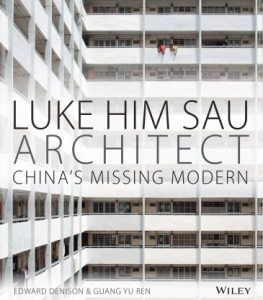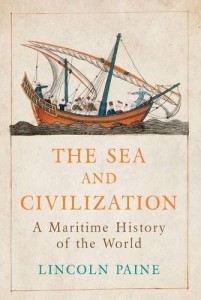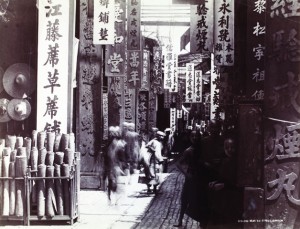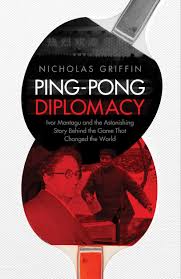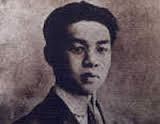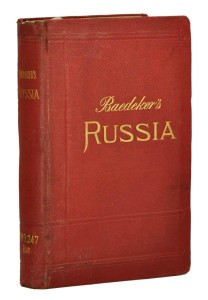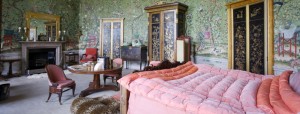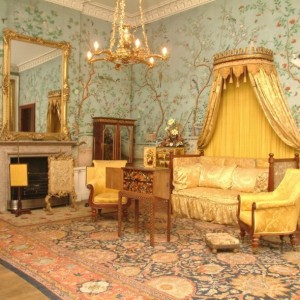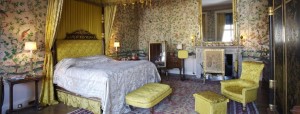EDWARD DENISON
The Sea and Civilisation – The East Comes First
Posted: April 24th, 2014 | No Comments »Lincoln Paine’s The Sea and Civilisation: A Maritime History of the World is a terrific and absorbing read. For the China Rhymer it’s fascinating largely in that so much of global maritime history is linked to China and the Far East. Europeans and Americans are of course newcomers to the oceans. Just to give a small offering of the many delicacies of the book it is worth remembering, as Paine points out, that the sea was how Islam reached Indonesia and South East Asia and that during the Liu Song dynasty Buddhism was brought to China partly by sea. At the time of Marco Polo Guangzhou was a far busier port than Alexandria, the Mediterranean’s major port at the time. And on and, fascinatingly, on….Of course many of us know all this, or most of it, but putting it altogether in one book and contrasting with the maritime exploits of everywhere else has significant merit.
Lincoln Paine takes us back to the origins of long-distance migration by sea with our ancestors’ first forays from Africa and Eurasia to Australia and the Americas. He demonstrates the critical role of maritime trade to the civilizations of ancient Egypt and Mesopotamia, and the Indus Valley. He reacquaints us with the great seafaring cultures of antiquity like those of the Phoenicians and Greeks, as well as those of India, Southeast and East Asia who parlayed their navigational skills, shipbuilding techniques, and commercial acumen to establish vibrant overseas colonies and trade routes in the centuries leading up to the age of European overseas expansion. His narrative traces subsequent developments in commercial and naval shipping through the post-Cold War era. Above all, Paine makes clear how the rise and fall of civilizations can be traced to the sea.
Finding China’s past around us: Photographs and other legacies of two centuries of Anglo-Chinese relations – Robert Bickers – Museum of East Asian Art, Bath – 24/4/14
Posted: April 23rd, 2014 | No Comments »Finding China’s past around us: Photographs and other legacies of two centuries of Anglo-Chinese relations
Thursday 24 April, 18:30-19:30; Book by Wednesday 23 April
Admission: Friends and students £2.50; Public £5
Professor Robert Bickers (Professor of History, University of Bristol)
Scratch beneath the surface, or root around in the back of the cupboard, and you can often find in cities like Bath direct evidence of the long-intertwined histories of Britain and China. This talk will explore these, focusing on the rich archive of visual records of China’s modern history held in the UK.
Ping-Pong Diplomacy and China
Posted: April 22nd, 2014 | No Comments »I’m sorry but I’m just not convinced of the importance of ping-pong diplomacy – it’s probably just me. I know everyone likes to talk about it as the “icebreaker” and I’m sure it played a role, but I just feel I’m always being oversold on its importance. Still, Nicholas Griffin’s Ping-Pong Dioplomacy: Ivor Montagu and the Astonishing Story Behind the Game that Changed the World does indulge in this inflation (“astonishing”, “Saved”!!) but it’s immensely readable all the same.
It was one of the most significant developments of the post-war era: China finally abandoning its close relationship with the Soviet Union to begin detente with the USA. Astonishingly, the man who helped make it happen was a British aristocrat, Ivor Montagu, a Soviet spy who knew Stalin and dined with Trotsky. Even more remarkably, the means to this rapprochement was table tennis, a sport loved by both Chairman Mao and Montagu. For years, Montagu had lived a dual life, working to spread communism and also table tennis around the world. Surprisingly, the two strands of his career would come together in an event of global significance.
Nicholas Griffin weaves a compelling story to reveal the background to the famous occasion in 1971, when the USA’s Glenn Cowan, a 19-year-old hippie, befriended China’s world champion Zhuang Zedong, who was imprisoned during the Cultural Revolution. Within days, the Americans would be playing the Chinese in front of 18,000 fans in Beijing, with the whole world watching. It was the beginning of a thaw in Sino-US relations that forced the Soviets into a crippling arms race that acted as a catalyst to pressuring them into errors that would draw the Cold War to an end. Sometimes sport truly can have the biggest consequences.
Shanghai RAS – 22/4/14 – Liu Haisu: Shanghai, Paris, Art and Friendship 1926-1937
Posted: April 21st, 2014 | No Comments »GRETCHEN LIU
 on
Liu Haisu: Shanghai, Paris, Art and Friendship 1926-1937
Tuesday 22 April 7:00 for 7:15 PM
RAS Library at the Sino-British College
1195 Fuxing Zhong Lu
The history of art during the Republican era is closely associated with the Shanghai Art Academy. In recent years scholars in China and in the West have researched the history of the Academy, its founder and longtime principal Liu Haisu (1896-1994), as well as its faculty and students, to better understand its role in disseminating Western art theory and practice in China.
Â
When Liu Haisu was sent to Europe on a government mission to further his study of Western art and promote a greater understanding of modern Chinese art in Europe he contacted two of the Academy’s former students for advice, Liu Kang (1911-2004) and Chen Ren Hao (1908-1976), who had come to Paris to continue their art studies. Upon arrival Liu Haisu settled into the same accommodation in Nogent-sur-Marne in the eastern suburbs of Paris. There he was introduced to the young writer/translator Fou Lei (1908-1966) who had come to Paris to study the French language and literature and was developing an interest in art through his friendship with Liu Kang and Chen Ren Hao.
Â
From 1929 to 1931 this intimate group explored Paris, visiting museums, galleries and artists, and traveled to Switzerland and Belgium. The experiences affected each of them profoundly. Deep friendships were formed that, despite several sharp disagreements and the vicissitudes of time, essentially lasted lifetimes. The lecture draws on the photographs of Liu Kang to illuminate the experiences of Chinese artists in Paris and its impact on Shanghai’s art scene.
Gretchen Liu – A former journalist, book editor and author with a special interest in architecture, visual heritage and the history of travel, Gretchen Liu is the author of a dozen books on Singapore and its history. She is the daughter-in-law of Liu Kang and is working on a book that explores his Shanghai experiences and friendships.
RSVP: to RAS Bookings at: bookings@royalasiaticsociety.
 Â
ENTRANCE CONTRIBUTION: Members 50 RMB Non-members 70 RMB. Includes a glass of wine or soft drink. Priority for RAS members. Those unable to make the donation but wishing to attend may contact us for exemption.
Â
MEMBERSHIP applications and membership renewals will be available at this event.
Â
RAS MONOGRAPHS – Series 1 & 2 will be available for sale at this event. 100 rmb each (cash sale only)
Â
WEBSITE: www.royalasiaticsociety.org.cn
Baedeker in Port Arthur and Peking
Posted: April 19th, 2014 | No Comments »In 1914 the world’s leading travel guides publisher Baedeker published the first edition of their guide to Russia which included chapters on Tehran, Port Arthur and Peking. The Russians still had a base at Port Arthur and the completion of the Trans-Siberian Railway was just a couple of years away connecting Moscow to Peking, so it made sense to have these inclusions. This edition published by Karl Baedeker of Leipzig was nearly 600 pages long and was presumably intended for those both visiting and travelling across Russia to either China or Persia by train.
World Film Locations: Shanghai
Posted: April 19th, 2014 | No Comments »The World Film Locations series has added Shanghai to its list with John Berra and Wei Ju’s new book. The book is most interesting to China Rhymers when it talks about old Shanghai’s indigenous movie business and those that recreate old Shanghai – Shanghai Triad, Lust/Caution etc. I’m not overly bothered about Skyfall etc as the reason for these recent films being partly or wholly set in Shanghai seems rather obvious given the cityscape and potential of Chinese eyeballs and ticket sales.
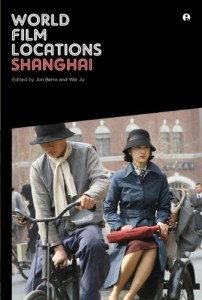 Celebrating Shanghai’s rich cinematic history, the films covered here represent a lengthy time period, from the first Golden Age of Chinese Cinema in the 1930s to the city’s status as an international production hub in 2013. Given the enduring status of Shanghai as the “Paris of the East,â€Â World Film Locations: Shanghai emphasizes the city’s cosmopolitan glamour through locations that are steeped in cinematic exoticism, while also probing the reality behind the image by investigating its backstreets and residential zones. To facilitate this study of Shanghai’s dual identity through reference to film locations, the book includes films from both the commercial and independent sectors, with a balance between images captured by local filmmakers and the visions of Western directors who have also utilized the city for their projects.
Celebrating Shanghai’s rich cinematic history, the films covered here represent a lengthy time period, from the first Golden Age of Chinese Cinema in the 1930s to the city’s status as an international production hub in 2013. Given the enduring status of Shanghai as the “Paris of the East,â€Â World Film Locations: Shanghai emphasizes the city’s cosmopolitan glamour through locations that are steeped in cinematic exoticism, while also probing the reality behind the image by investigating its backstreets and residential zones. To facilitate this study of Shanghai’s dual identity through reference to film locations, the book includes films from both the commercial and independent sectors, with a balance between images captured by local filmmakers and the visions of Western directors who have also utilized the city for their projects.
With numerous essays that reflect Shanghai’s relationship to film and scene reviews of such iconic titles as Street Angel, Temptress Moon, Kung Fu Hustle, and Skyfall, World Film Locations: Shanghai is essential reading for all scholars of China’s urban culture.
Belvoir Castle’s Chinoiserie wallpaper and “Chinese Rooms”
Posted: April 18th, 2014 | No Comments »I’ve just been reading Catherine Bailey’s The Secret Rooms: A True Gothic Mystery (a good read by the way – though more about World War One than anything overtly Gothic). The book centres around Belvoir Castle (the Duke of Rutland’s residence) and notes the castle as being famous for its Chinoiserie rooms (Bailey notes several “Chinese rooms”) and, in particular, the exquisite Chinoiserie wallpaper that covered many other rooms. Belvoir (in Grantham Leicestershire) has been overhauled quite a bit and seems to do a nice turn in weddings and I’m afraid I don’t have any old shots – but the wallpaper remains Chinoiserie.
